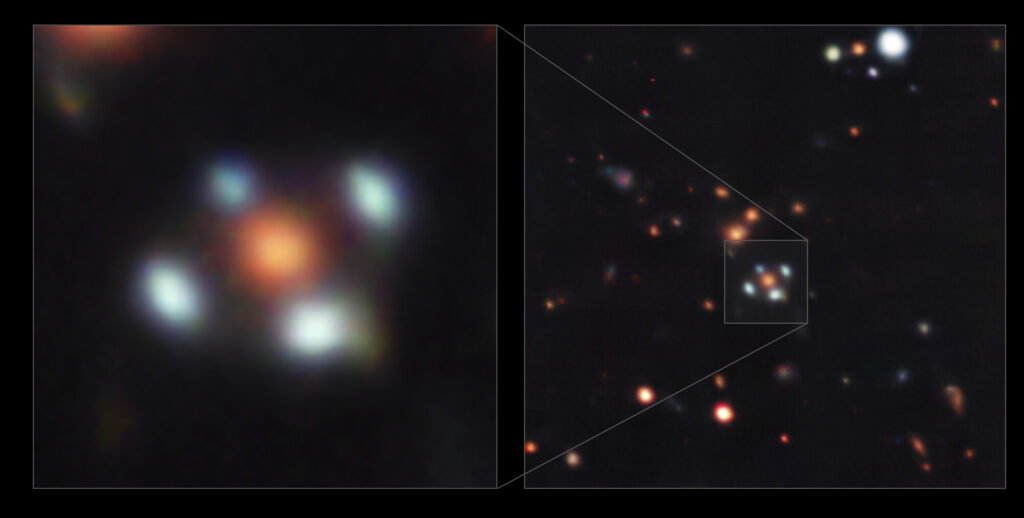The European Southern Observatory has published a very interesting image of deep space obtained by the Very Large Telescope (VLT). It demonstrates an optical phenomenon called the Einstein cross.

Spacetime is not uniform. The gravity of any sufficiently massive object will “bend” it, forcing it to curl, which leads to a number of very interesting effects. One of them is a gravitational lens. Its essence lies in the fact that the gravity of a massive object closer to us, like a lens, will increase the brightness and change the direction of movement of light rays from a more distant background body.
Modern astronomers are very actively using gravitational lenses for their needs. After all, they help to consider objects at the edge of the Universe that even the most powerful of existing telescopes can’t see.
But gravitational lenses can not only increase the brightness of distant galaxies, but also “duplicate” their images. In some cases, the curvature of space-time caused by powerful gravity can divide the light from the background object into four parts, like the points of a cross. This phenomenon is called the Einstein cross.
If you look at the VLT image, you can pay attention to an object resembling a “space flower”. It consists of an orange galaxy, which is surrounded by four blue galaxies like petals. This is Einstein cross. The orange galaxy acts as a lens, quadrupling the image of a more distant background galaxy. So in reality, there is only one of the four petals we observe. The other three are nothing more than space mirages.
According to https://www.eso.org
Follow us on Twitter to get the most interesting space news in time
https://twitter.com/ust_magazine

